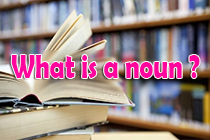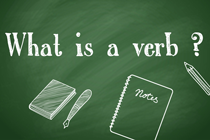Capitalization and punctuation

Since every sentence begins with a capital, the how-to’s of capitalization seem like a logical place to begin learning about language mechanics.
Capitalization Checklist
- The first word of every sentence.
- The first word of a quoted sentence (not just a quoted phrase)
- The specific name of a person (and his or her title), a place, or a thing (otherwise known as proper nouns). Proper nouns include specific locations and geographic regions; political, social, and athletic organizations and agencies; historical events; documents and periodicals; nationalities and their language; religions, their members and their deities; brand or trade names; and holidays.
- The abbreviation for proper nouns. Government agencies are probably the most frequently abbreviated. Remember to capitalize each letter.
- Adjectives (descriptive words) derived from proper nouns.
- The pronoun I.
- The most important words in a title
Periods
✓At the end of a declarative sentence (sentence that makes a statement)
➞Today, I took a walk to nowhere.
✓At the end of a command or request
➞Here’s a cloth.
✓At the end of an indirect question
➞Jane asked if I knew where she had left her keys.
✓Before a decimal number
➞Statisticians claim that the average family raises 2.5 children.
✓Between dollars and cents
➞I remember when $1.50 could buy the coolest stuff.
✓After an initial in a person’s name
➞You are Sir James W. Dewault, are you not?
✓After an abbreviation
➞On Jan. 12, I leave for Africa.
Question Marks
✓At the end of a question
➞Why do you look so sad?
✓Inside a quotation mark when the quote is a question
➞She asked, “Why do you look so sad?”
Exclamation Points
✓At the end of a word, phrase, or sentence filled with emotion
➞Hurry up! I cannot be late for the meeting!
✓Inside a quotation mark when the quote is an exclamation
➞The woman yelled, “Hurry up! I cannot be late for the meeting!”
Quotation Marks
✓ When directly quoting dialogue, not when para- phrasing
➞Hamlet says, “To be, or not to be. That is the question.”
✓For titles of chapters, articles, short stories, poems, songs, or periodicals
➞My favorite poem is “The Road Not Taken.”
Semicolons
✓Between two independent clauses (an independent clause is a complete thought. It has a subject and a predicate.)
➞Edward joined the basketball team; remarkably, the 5´4˝ young man excelled at the sport.
✓Between elements in a series that uses commas
➞The possible dates for the potluck dinner are Thurs-day, June 5; Saturday, June 7; or Monday, June 9.
Colons
✓Between two complete ideas when the second idea explains the first.
➞Keri pushed her dinner away: She had eaten on the car ride home.
✓Before a list
➞Grandma brought Chloe’s favorite three sweets: chocolate kisses, Tootsie Rolls, and a Snickers bar.
✓Between titles and subtitles
➞Finding Your Dream Home: A Buyer’s Guide.
✓Between volumes and page numbers
➞Marvel Comics 21:24
✓Between chapters and verse
➞Job 4:12
✓Between hours and minutes
➞It’s 2:00 a.m.—time to sleep.
Apostrophes
✓Where letters or numbers have been deleted—as in a contraction
➞I looked at my father and whispered, “It’s (It is) okay to cry every so often.”
✓At the end of a name where there is ownership (remember to also add an s after the apostrophe if the word or name does not end in an s already) ➞Mary Jane’s horse sprained his ankle during practice.
Commas
✓Between items in dates and addresses
➞Michael arrived at Ellis Island, New York, on February 14, 1924.
✓Between words in a list
➞The university hired a woman to direct the Bursar’s, Financial Aid, and Registrar’s offices.
✓Between equally important adjectives (be careful not to separate adjectives that describe each other)
➞The reporter spoke with several intense, talented high school athletes.
✓After a tag that precedes a direct quote
➞David whined, “I am famished.”
✓In a quote that precedes a tag and is not a question or an exclamation
➞“I am famished,” whined David.
✓Around nonessential clauses, parenthetical phrases, and appositives (A nonessential or nonrestrictive clause is a word or group of words that are not necessary for the sentence’s completion; a parenthetical phrase interrupts the flow of a sentence; and an appositive is a word or group of words that rename the noun preceding them)
➞Matt’s mother, Janie (appositive), who has trouble with directions (non-essential clause), had to ask for help.
✓After introductory words, phrases, and clauses
➞Hoping for the best, we checked our luggage.
✓Before conjunctions (Conjunctions are words that link two independent clauses together)
➞Drew wanted to experience ballroom dancing before his wedding, so he signed up for lessons at a local hall.
Để biết thêm chi tiết vui lòng liên hệ:
DU HỌC UNIGLOBE
10/3 Nguyễn Thị Minh Khai, Phường Đa Kao, Quận 1, TP.HCM
ĐT: (08) 35 173 345 – 35 173 678
Email: info@uniglobe.edu.vn
Website: www.uniglobe.edu.vn






bình luận